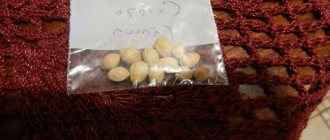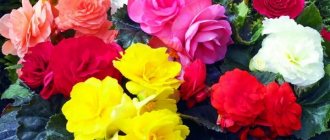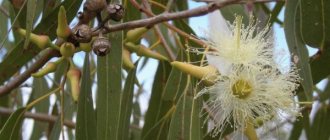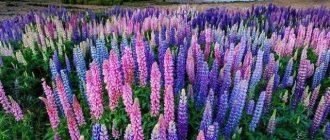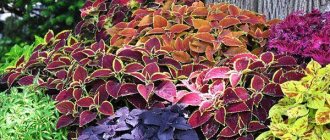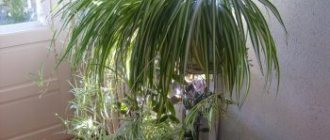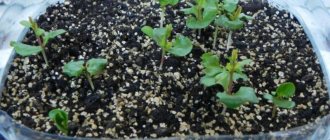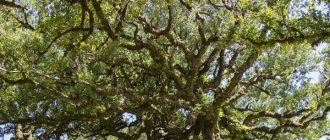For bonsai connoisseurs, maple, sakura and mountain pine are real symbols of this ancient art.
But if evergreen pine needles make the tree’s appearance unchanged throughout the year, sakura is especially attractive in the spring, during flowering, then maple is a bright palette of autumn with unusual openwork foliage. Maples are distributed throughout the northern hemisphere. Bonsai culture is traditionally dominated by Far Eastern, Chinese and Japanese varieties, but the growing popularity of this area of plant growing has made it possible to include varieties from Europe, the Caucasus and the North American continent in the list of species.
Stages of bonsai (potensai) formation
Pavel Karpenkov (beomaster) gives brief instructions for beginners on the formation of bonsai using the example of ficus benjamina:
1. Formation of roots
We need to get 2 main things:
Flat root system. Initially, a plant is selected that can be transplanted into a wide but low container without causing lethal injuries to the plant. Therefore, we exclude those that live by tap roots and those taken from nature, since I consider it inappropriate to waste time on their resuscitation after extraction. It is recommended to focus on ZKS, potted plants. Beautiful thick lateral roots extending evenly from the base of the trunk like a star and visible above the soil surface (nebari)
Initially, when choosing a plant, you should pay attention to the presence of such plants or those that can become them. Therefore, plants with root sponges are undesirable - from hydroponics
Typically, such roots form in plants growing in the ground, former cuttings or taken away.
2. Base of the trunk
Beautiful thick lateral roots cannot move away from a thin stick. The base should have a pronounced taper in the transition from the roots to the trunk itself, I'm talking about the first 2-3 cm above the surface. Having chosen the right plant initially, this most important place for visual perception will only improve in the future.
3. The trunk itself
Please note the following:
- Convergence. The trunk should thin evenly and distinctly from the base to the top, and the height should not be large; for the beginning, approximately 15 diameters of the base will be normal; when forming, it is worth bringing this ratio to 10.
- Form. Natural bends, tilts, twisting with a screw are always welcome and provide food for imagination when shaping, if our goal is not initially an upright style or a broom.
- Texture. We strive to form a small but impressive plant. Therefore, the bark is rough, wrinkled, peeling, forming nodules, traces of overgrowth of long-cut branches, natural hollows, etc. Very good. In short, light, tender, smooth, no ice. Unless we clean it specifically for contrast, but more on that later.
4. Skeletal branches
After purchasing, your hands will immediately itch, and you will want to trim the future frame. When purchasing, you should immediately figure out which branches will become the skeleton; they should alternate evenly, have a thickness uniformly decreasing from the bottom up, and the thickness should be commensurate with the thickness of the trunk
In short, the lower branch is the thickest and is not equal in thickness to the trunk (note the forks) and is located no higher than a third of the estimated height of the plant. A very important point, it will be difficult to correct later
5. Branching structure
The selected skeletal branches must branch well so that we can select the branches of the second order that we need, so that they do not look bald, so that the internodes are short. Then, by simple pruning, you can quickly give the desired shape to the crown of each skeletal branch and the crown of the plant as a whole.
6. Leaves
Under all other conditions, the size of the leaf plate plays an important role. Our tree will never look mature if the leaves are large, comparable to the diameter of the branch or, God forbid, the trunk. In nature, old trees don’t have this. There are ways to reduce the size of leaves, but for different plants the reduction factor is different and there is always a limit; it is better to initially focus on small ones.
Density of foliage. The leaves may be small, but grow rarely. Then the plant will always look bald.
7. Overall crown shape
This refers to the tendency to grow upward or outward. For us, of course, it’s better in breadth - a small spreading tree always looks more advantageous than a tree with a small span of skeletal branches. And no ligature will change this trend, it will always be under wire or stretch marks, which is not good.
8. Growth rate
Subject to the above wishes, the plant itself must be fast-growing, otherwise the results of its formation can be expected until Japanese Easter. At the same time, it should thicken the trunk well. For this reason, myrtle is not suitable.
Recommendations for caring for Japanese maple bonsai
Location: Japanese maple prefers a sunny, well-ventilated place, however, during the midday heat it needs shading to avoid damage to the leaves. Japanese maple is frost-hardy even in bonsai form, but it must be protected from severe frosts below minus 10 degrees.
Watering: During the growing season, Japanese maples most often need to be watered daily, and on the hottest days even several times a day, provided that a well-drained mixture is used and the tree is healthy and actively growing. Water with water without lye, as Japanese maple prefers a neutral to slightly acidic environment.
Fertilizer: Especially for old Japanese maple bonsai, solid organic fertilizers have worked well, acting slowly and gently and usually containing all the necessary microelements. Follow dosage instructions carefully. If active growth is desired, such as in the case of young immature plants, an additional weekly feeding with liquid fertilizer can be used. However, avoid fertilizers with a high concentration of nitrogen, as they lead to excessively long internodes and large leaves.
Pruning: Pruning of young shoots can be done all year round. Thick branches should be pruned in the fall to avoid excessive sap, or in the summer, when the cuttings are actively overgrown due to the accelerated growth of callus. It is recommended to caulk the cuts as Japanese maple is vulnerable to some fungal diseases that can enter through the wounds. Prune young branches to one or two pairs of leaves. Growth on mature bonsai with openwork branching can be pinched to prevent thin branches from thickening. After the first pair of leaves opens, remove the tender tip of the extension of the shoot located between them. This method weakens the tree in the long term and must be used carefully and for a specific purpose.
Repotting: Repot your Japanese maple bonsai every two years with heavy pruning of the roots, which grow very actively and completely fill the pot. Use well-drained potting mixes such as acadama mixed with a little organic soil and kanuma.
Pests and diseases: Japanese maple is a fairly resistant tree species. However, in the spring it is often affected by aphids, which can be eliminated using conventional insecticides sold in a variety of forms, including sprays or sticks that are stuck into the ground. Verticillium wilt is a fungal disease that can cause partial or complete death of Japanese maple trees. It can be found on fresh cuts in the form of black spots. The disease is practically untreatable and there is a risk of infecting other trees through tools, which, if the disease is suspected, must be thoroughly cleaned and disinfected.
Propagation: Japanese maple is easily propagated by seeds or cuttings taken in the summer. Air layering is also a quick and easy way to propagate this species.
For more information on these techniques, check out our section on bonsai care.
Example of Japanese maple bonsai
Japanese maple, image courtesy of Walter Poll.
Japanese maple bonsai shaped by Heike van Gunst.
Diseases and pests that pose a threat
Japanese maple is a plant that is resistant to various types of pests and diseases that other types of bonsai may be susceptible to. However, in the spring, the miniature maple may be attacked by aphids. They are easily destroyed with insecticides.
Another attack is a fungus that can completely destroy a tree. To prevent this from happening, when pruning, replanting and other care, it is necessary to follow safety rules, as well as thoroughly disinfect tools and materials.
In ancient China and Japan, it was believed that by growing bonsai, you could feel like a god, feeling the power over nature. People achieved enlightenment by spending hours contemplating the beauty created with their own hands. Now this highest point of pleasure is available to mere mortals. Once you decide to grow maple bonsai, you become a fan of this ancient art forever.
Multi-baker Redmond RMB-611
2172 ₽ More details
Multi-baker Redmond RMB-611
2172 ₽ More details
Under-sink dishwashers
The optimal maple variety for bonsai
Bonsai is a type of plant that is widespread in Japanese culture. To create such a miracle at home, you must first of all trim the crown so that it takes on the correct shape. Subsequently, you need to work with the root system. A bonsai tree can be grown from bamboo, sakura, lemon and pine. But the most amazing piece will be the red maple bonsai. Most of the plants belong to the category of evergreens, only sakura in the spring pleases with its beautiful color. Unlike the others, maple has leaves with variegated, bright shades. This plant will be a wonderful decoration for any home and will not leave anyone indifferent.
In order to get the desired result from maple, you need to approach the choice of variety very seriously. The most suitable varieties are considered to be:
- palmate;
- ash leaf;
- platanofolia;
- field;
- rocky
These specimens, due to their small size and small leaves, will be in perfect harmony with other representatives of the bonsai composition. Currently, the art of decorating living home masterpieces has acquired great scope and is constantly being improved. If you want to have such beauty at home, then just go to a specialized store and buy a blue maple bonsai, purple, Japanese red. They will fit perfectly into any interior.
Growing options
You can grow small trees using the following forms:
- inclined;
- groves;
- broom-shaped;
- erect.
The composition at home can be grown using seed material or cuttings, giving it any shape. You just have to study the principle of operation in detail, do everything consistently and correctly, without missing out on important nuances.
Maple bonsai: how to grow
Location
Maple trees are hardy and highly adaptable. Although this plant looks small and cute, the maple bonsai cannot be called a house plant. This is a wild tree in miniature form.
Sunlight exposure is one of the most important factors when you decide where to place your Japanese mahogany tree. In the morning, it is necessary that the tree receives sufficient sunlight.
Seasonal calendar
- February-March: Protect the tree from bad weather by covering it or keeping it in a warm place, replanting is possible.
- April-May: After the buds have bloomed, it is necessary to start fertilizing the trees every week to start growth. Fertilizers should be reduced when the tree has completed its formation.
- It's time to admire the beautiful, delicate maple leaves. We closely monitor the appearance of pests.
- May-June: The tree continues to feed and long growths need to be pruned.
- June-July: Reduce feeding to twice a month, continue to feed the tree with mineral fertilizers.
- July-August: Elimination of nitrogen fertilizers. Let the tree strengthen, stopping plucking it until winter.
- September: By changing the color of the blue maple bonsai to yellow, all problems are eliminated.
- October-November: Protect the tree from winds, low temperatures and insects.
- November-December: We exclude watering if necessary. It is recommended to bonsai once a month if the tree overwinters in a shelter.
- December-January: An excellent time to plan maple bonsai pruning and determine the future shape.
Searching for seeds
Most often, gardeners use a mature tree seed - subsequently, this source can be given any shape without the need to change the already formed system.
The collection is carried out after the “helicopters” ripen and fall from the branches in the autumn. True, such material is not ready for planting: for the seeds it is necessary to arrange an imitation of winter rest in artificial conditions. To do this, take a container with a tight-fitting lid, place wet sand in it, into which the seeds are buried, close the container and place it in the refrigerator. The stratification period is 100-120 days; in the spring the collection is ready for planting.
If you want to grow a natural decorative item at home, but don’t have time to collect seeds, you should contact specialized stores that offer ready-made planting material for Japanese and other types of maple. Blue, light blue, and red bonsai are obtained only from specially bred plants.
A faster way to get a decorative tree is to plant cuttings.
Preparation of planting material
To make the seeds grow faster, their dense shell is cut and placed in warm water or 9% hydrogen peroxide for 2-3 days. In conditions of high humidity, intense absorption of liquid occurs and the seed comes to life.
To prevent the development of diseases of the tree embryo, the seeds are initially treated with a dry or liquid fungicide.
Preparing the soil and container
To grow maple bonsai at home, it is important to properly prepare the soil. For maple, take an equal ratio of alumina, humus and sand
An important stage is soil disinfection. Best ways:
- Heat treatment at high temperatures. To do this, the soil is heated in the oven, microwave or in a water bath, then cooled, dried and sifted through a sieve.
- Another method is freezing and then thawing the soil.
- The use of biologically active additives such as “Fitosporin”, “Barrier”, etc. They are sold in specialized flower growing stores.
During processing, pathological fungi, mold, insect eggs and other infections that can harm the plant die. After the procedure, fertilizer is introduced into the soil to restore beneficial microflora.
For the first time, you can take a small bonsai pot - growing a tree is no faster than in natural conditions, so as it grows, it is changed to a larger volume.
The container is thoroughly cleaned with non-aggressive substances, washed and dried. There must be drainage holes in the bottom of the pot. To avoid soil washing out, it is recommended to line the bottom with mesh.
Planting seeds
Soil is poured into the prepared container, leaving 3 cm to the edges of the bonsai. If there are several seeds, they are placed at a distance of at least 1 cm from each other. The resulting layer is pressed with a board, then soil no more than 3 seed diameters thick is poured on top. The planting is lightly watered and the container is covered with glass or polyethylene to allow light to pass freely and retain moisture.
After the first shoots appear, the glass is lifted and several holes are made in the film to supply fresh air.
After the leaves have formed, young shoots are planted in fresh soil at a distance of 2-3 cm.
Soil preparation
To grow Japanese maple, it is important to choose the right container and prepare the soil.
Substrate called Akagama (natural soil in the 1st prefecture of Japan). Composition: humus, coarse sand and alumina (1x1x1).
This substrate for barefoot maple:
- excellent moisture retention;
- light and loose for free access of air, as well as protection of roots from rotting;
- the soil must have sufficient nutrition.
For blue maple (and deciduous plants) it is better to prepare: sand in combination with turf (3x7).
- coarse sand from the river;
- clean the soil by sifting through a coarse sieve;
- the resulting mixture is disinfected - treated thermally: it can be heated in a frying pan (water bath). You can freeze the substrate and then thaw it, this is also an excellent disinfection. Then be sure to dry the soil well and pass it through a sieve once.
Advice! You can disinfect the soil with biological products “Barrier” or “Fitosporin”; they will destroy possible eggs of various insects or fungal spores.
- Plot near a pond: nuances of choice
- Which fast-growing shrubs are suitable for green fences?
- Juniper stricta - description, cultivation, planting and care. Secrets of garden maintenance and application in landscape design (130 photos and videos)
The disinfected soil is fertilized. Seeds are planted in a shallow (up to 5 cm) and wide container with 3-4 drainage holes.
Before use, wash the container well with a non-aggressive agent. It is better to scald with boiling water to destroy fungal spores and dangerous bacteria, then let it dry.
Watering, fertilizing, wintering
The main problem in caring for a bonsai is watering it. Due to the small size of the pots, the roots of the tree are deformed and the efficiency of watering is reduced. There are two main methods of watering: irrigation and submersion.
- The plant is watered with water from a special kettle.
- The tree pot is placed in a bowl of water and taken out after a few minutes.
It is better to water with rainwater, but if there is none, let it sit for two days with tap water.
Remember, bonsai die without water. Even if its leaves are green, if there has been no watering for a long time, the roots are most likely dead.
In summer, watering should be done more often and more water should be poured.
Feeding is important when growing bonsai, especially at the time of crown formation. The tree is fertilized once every 2-3 weeks, and algae-based fertilizer must be applied once a month
The most important components of fertilizer are potassium, nitrogen and phosphorus.
Nitrogen is responsible for the growth and development of tree leaves and stems. It is the main component that promotes cell division and protein production.
Phosphorus stimulates cell division, is responsible for budding and has a positive effect on root growth and development. Protects against diseases.
Potassium helps fight microorganisms that cause disease, promotes fruiting and flower development.
Bonsai food must contain these substances. In flower shops it is difficult to find a suitable option that contains all the substances in the required proportions. Therefore, we recommend mixing fertilizers yourself in the following proportions:
- In the spring, when the growth period is more intense, add more nitrogen. The optimal ratio of nitrogen, phosphorus and potassium is 12:6:6, respectively;
- in summer, nutrition should be more balanced, so components are added in equal proportions - 10:10:10
- In autumn, less nitrogen is required, the optimal ratio of components is 3 parts nitrogen and 9 parts each of phosphorus and potassium.
If the bonsai is grown from a flowering tree, focus on adding potassium in a proportional ratio of 12:6:6
Indoor bonsai plants are fertilized all year round, and outdoor ones - from early spring to mid-autumn. Young trees are fertilized once every 2 weeks, older bonsai can be fed once every 4-6 weeks. Flowering bonsai should not be fed during the flowering period or immediately after it. When feeding, remember that it is better to apply less fertilizer than to “overfeed” the plant.
When winter comes, inexperienced gardeners who have miniature trees outside make a huge mistake - they bring them into a warm room. This behavior causes the tree to constantly grow, which takes too much energy and depletes resources. By depriving the plant of its natural “rest”, all efforts can be wasted. A tree that grows outside needs to be properly prepared for wintering:
- Clean branches from dirt and pests.
- Move the trees to an elevated, lighted, draft-free spot in the garden.
- At temperatures below -100C, move the plant to an unheated room.
- Make sure the soil is not too wet.
Bonsai is an amazing art and painstaking work that begins with the selection and search of seeds and never ends. Like all living things, bonsai requires care and thanks its owner for his kindness with green leaves, bizarre shapes and a unique sophistication of the image.
To reinforce the material, watch a good video on growing bonsai from seeds. There is a lot to learn from the author!
Watering
High humidity at low temperatures can lead to fungal diseases.
A small container will distort the plant's roots.
Abundant watering, preferably from a kettle. You can immerse the pot in a wide container of water for a short time.
Rainwater for irrigation is desirable. You can use flow-through, but let it sit for 2 days.
What type of maple is suitable?
Bonsai is a plant species common in Japanese culture. The process of creating such a home specimen includes, first of all, pruning the crown, that is, its correct formation, as well as working with the root system of the greenery. Florists practice growing bonsai trees from various trees (pine, sakura, lemon, bamboo).
However, among all these specimens, the maple bonsai will definitely stand out. If previous plants retain the greenness of their leaves throughout the growing season (sakura is covered with bright flowers), then the maple is notable for the fact that its foliage acquires bright, variegated shades. Plant such a specimen in your home, and no one will pass by this aesthetic decoration.
In order to achieve the desired result in the process of cultivating a maple bonsai tree, it is necessary to understand which plant varieties can be used for this purpose. Experienced flower growers recommend leaning towards the following types of maple:
- rocky;
- field;
- ash leaf;
- palmate;
- platanofolia.
It is better to choose from these specimens, since their dwarf plants form small leaves that will look harmonious as a bonsai composition.
Interestingly, the modern art of creating such indoor masterpieces is constantly developing. If you want to add a homemade miniature maple to your flower collection, you can safely purchase its color variations: blue bonsai maple, Japanese red (Atropurpureum), purple. Such maple compositions will not leave anyone indifferent.
Varieties of maple bonsai - description
A small indoor tree can be grown from lilac, pine, sakura, willow, laurel and other plants. We'll start with maple - its smaller copy turns out to be very original and beautiful. Here are the types of trees that make bonsai:
- Field.
- Rocky.
- Palm-shaped.
- Platanolifolia.
All these varieties have small leaf sizes, which will harmoniously fit into the interior of the room. Breeders also bred colored species: red, blue and purple.
Maples for bonsai
Maple bonsai is a deciduous form of Japanese art. Unlike conifers, miniature evergreens, maples can have different shades of foliage, sometimes changing color as they grow.
Note! Unscrupulous sellers can lure buyers by offering blue maple as a bonsai. This color does not exist in nature
The finished bonsai may be subject to staining, and seeds that imply a blue color will turn out to be ordinary when germinated.
Suitable varieties
Varieties of maples that are ideal for indoor growing:
- palmate;
- rocky;
- ash leaf;
- field;
- platanofolia.
It is these tree varieties that have leaves that grow in proportion to the size required for bonsai. It should be remembered that maple bonsai has the same features as its ordinary relatives. This means that in the fall all the leaves fall off and the plant goes into a state of winter dormancy. Also quite common is maple, the crown of which is colored red. But the common red maple has higher care requirements, since its leaves have little chlorophyll.
Important! The technique of the Japanese art of growing bonsai cannot be rushed. A miniature tree can become an ideal specimen only 10-15 years after planting
Types of maples
Maple Bonsai Styles
According to treatises on Japanese art, domestic trees should look as if they were sprouting in the wild. Throughout the life of the plant, and especially the first years after planting, the grower purposefully gives it the initially chosen shape. The styles adopted in bonsai identify the strength and stability of the plant against the pressure of the environment.
There are about 20 basic styles, but they are not specific examples of the future of bonsai. Flower growers strive to give shapes that correspond to the name. According to the styles, the tree can have regular, symmetrical features or look as if it had been bent by a strong wind.
How to Plant Maple Seeds from Bonsai
You can plant them directly in the ground, but this will make it difficult to control their growth. It is better to use a pot or tray for planting.
Planting Instructions
Instructions for planting seeds and caring for sprouted plants usually depend on the species and climate conditions.
- To prepare the pot/tray, place a net on the bottom
- Cover this mesh with soil, which has larger particles, and on top of this layer;
- Add finer soil mixed with potting compost.
- Place the seeds on top of this section and cover with the same soil mixture (the seedlings will be planted in this top layer, which will allow for better air circulation in the plant pot).
What to look for when landing
It's easiest to plant seeds that will naturally germinate (in the wild) in the same climate and season that you plant it. Sometimes conditions may not be optimal. This may be true;
- Seeds are stored for a long time;
- This type of tree does not usually grow in the climate/region in which it germinates, or the seeds are planted out of season;
- If this is the case, then you may need to pre-treat the seeds to encourage them to germinate, exposing them to the conditions under which they would germinate in the wild.
Bonsai oak: description, planting and care
How to grow oak bonsai? Indoor oak looks great in the interior; in addition, it can be grown from an acorn or a ready-made seedling
If you choose the first method, then it is important to choose high-quality planting material - the acorns should not be rotten or moldy. Place them in moss or sand and put them in the refrigerator for 2 months
Monitor the humidity level - excess moisture will destroy the acorn!
For further planting, we select and prepare dense soil - clay and fallen dry leaves in a ratio of approximately 9 to 1. You can put moss on the surface of the pot, which will slow down the evaporation of moisture from the soil. But before wintering, the surface of the earth is covered with dry leaves - they will prevent the roots from hypothermia.
In summer, the plant is watered frequently; in winter, during the dormant period, the frequency of watering is reduced to 1 time per week. Don't forget that oak bonsai loves warm and humid climates, so a sunny location and frequent watering are necessary for its growth.
Maple crown formation technique
An indoor tree can be given any shape, but it will take quite a lot of time. To form, you need to remember a few rules:
- In the first year, the young seedling is not pruned.
- In the second year, the plant is pruned at an angle of 45 degrees, which will give impetus to the side shoots and thicken the trunk.
- Before wintering, the shoot is completely cut off to the first branch closest to the base.
- In the fourth year you will be able to prune the branches according to your wishes.
Bonsai pot
Choosing the right bonsai pot is not easy. In professional literature they are called bowls. This dish has a unique shape and does not look like the usual pot for indoor plants.
The most important factor when deciding which pot to use is to make sure the pot is large enough for the soil to cover the plant's roots. To prevent root rot, you should also make sure your pot has one or more drainage holes in the bottom. If not, you can drill them yourself.
Selecting sizes
The first criterion for a pot is the size of the bowl. The pot must be large enough. You must maintain the aesthetics of your miniature.
Pots that are too large can spoil the appearance of the bonsai, creating an odd appearance. Some people grow their arrangement in simple pots and then move them to nicer ones.
This is useful if your plant is still fragile. The depth should be equal to the diameter of the bonsai trunk.
- For oval or rectangular shapes, the length should be 2/3 of the height of the tree.
- For round ones, the diameter should be 1/3 of the height.
- Miniatures with a wide crown may require a wider bowl.
- Specimens with a thick trunk require a deeper container.
These recommendations are based on aesthetics. Some types of trees require larger or smaller pots. Trees with fast-growing roots need deeper containers.
Thumbnail style
Rectangular or oval shapes are used for vertical and slanted trees. Literatures are placed in small round pots. For cascading compositions, a deep round, square, hexagonal or octagonal shape is used. The gallery below contains photos of a wide variety of bonsai pot options.
How to grow maple bonsai at home: types of tree and growing conditions
To grow your own bonsai, you will have to be patient. Popular miniature trees will become an elegant, sophisticated decoration of any room no sooner than in 5 years.
The art of bonsai began with the Japanese. They have been caring for plants for decades, giving them the most bizarre shapes. It is believed that any tree is suitable for bonsai.
Not only exotic sakura and mountain pine, but also maples are especially popular.
Types of maples for growing bonsai: features
There is nothing surprising about these trees for the inhabitants of our hemisphere. They grow in park areas, forests, on roadsides and in front gardens.
In the bustle of everyday life, people rarely pay attention to its beautiful carved leaves. And also to the richest palette of colors that replace each other in the autumn.
Lovers of ancient art have chosen several types of maples that are most suitable for growing miniature trees.
All of them captivate with the color of their foliage:
- blue;
- blue;
- red;
- ordinary, or sycamore, holly;
- shishigashira;
- Japanese.
In their homeland, bonsai, thanks to the variety of leaf colors, create entire compositions that delight the eye all year round. The types of maples whose foliage has an unusual rich color are valued not only in autumn, but in other seasons. And also constantly changes shades.
Ordinary
The common maple, or sycamore, is widespread in Russia and North America. It is unpretentious and takes root and reproduces well in natural conditions. In the north it often grows as a shrub.
There are many varieties of this maple, very beautiful:
- Royal Red with wrinkled leaf blades remains bright red all summer;
- Acer platanoidesvar with leaves that, already blooming, are strikingly purple, and then gradually change color to green. The shoots are also colored red;
- Crimson King has dark, almost black leaves;
- Globosa is prized for its natural spherical shape and very slow growth;
- Drummondii turns pinkish when the leaves open, and then pleases the eye with an unusually variegated color due to the white border on the leaves;
- Red Emperor changes from bright red to pink;
- Laciniatum has very carved leaves;
- Columnare is a low, columnar tree, its branches create an openwork ligature, and its flowers exude a bright fruity aroma;
- Princeton Gold is unusual for the yellow color of the foliage, bright when blooming, and then becoming delicate, almost transparent.
They have learned to grow bonsai from almost every subspecies of maple, but this is by no means easy.
Blue
Maple varieties whose leaves have a rich blue color have been bred by breeders and cultivated for growing bonsai. When purchasing seeds of such a maple, you can easily be deceived. In nature, these dwarf trees with soft blue foliage are found only in Japan.
Look great:
- palmate small-leaved Shaina and Dissectum Garnet;
- holly Crimson King and Crimson Sentry.
Important! Blue maples are very rare, and this is what unscrupulous seed sellers take advantage of.
Attempts to grow trees from them are often fruitless. Even a 3-4 year old bonsai purchased in a store can turn blue only due to special feeding and watering with chemicals.
Blue
No less rare are maple bonsai, the leaves of which are colored azure. But they can become a real decoration of any collection.
The color intensity of these varieties varies from the deep blue color of the foliage of the lower tiers to silver and light blue. The main specific characteristics of these varieties are:
- Openwork crown, tent-like, slightly drooping.
- The bark is light gray.
- The young shoots are interesting because of their red color.
- The leaves are two-colored - white above and bluish below.
- By autumn, the color becomes less intense, gradually turning into true blue.
Such trees require especially careful care. After all, any fluctuation in temperature and lighting can cause an “unscheduled” change in foliage color.
Red
The favorite of bonsai connoisseurs is the red maple. This is where the largest variety of shades from pink to purple is. It is these that tourists from all over the world come to Japan to admire in the autumn. This bonsai will delight its owners all year round, constantly changing shades.
Features of sowing seeds and plant care
Planting is done in spring, summer or early autumn in peat pots, which are filled with a mixture of sand and peat in a one-to-one ratio. If you have nowhere to buy peat, you can buy soil for cacti and mix it with coarse sand. Such a substance will be a complete replacement. Follow the following sequence of actions.
- Pour the mixture into the pot so that there is still 3 cm left to the edge.
- Add 1 centimeter of cleared turf soil and press down with a wooden circle.
- Place the seeds on the prepared surface and cover them with a layer of sand. The layer thickness is no more than twice the diameter of the seeds.
- Press down again with a wooden circle, remove it and pour water over the sand (no more than 80 ml).
- Cover with plastic wrap.
Place the pot with seeds in a dark place with a temperature of no more than 150C. Periodically remove the film for ventilation and check if the soil is dry. It should always be moist, but not wet.
When the first shoots emerge, pierce the polyethylene to provide air access. After the first shoots appear, remove the film from the pots and move them to a lighted room. Make sure that the plants are not exposed to direct sunlight. After 2-3 months, it is worth cutting off the taproot by 2/3; this process is called the formation of seedlings.
Fertilizers are added to the soil where the seedlings ripen. It is necessary to transplant the seedlings into a separate form after the sprout has grown by 10 centimeters. During this period, the sprout can be accustomed to the sun's rays and at the same time continue to form the desired shape.
Using this scheme, you can grow sakura bonsai or Japanese pine. But some types of trees require a special approach.
Features of agricultural technology of Japanese and red maple
This tree begins to drop seeds in the fall. To grow bonsai from maple seeds, they need to be stratified for 120 days. The optimal time for planting is April or May. To make sprouts appear faster, the seeds are soaked in hydrogen peroxide for 1-2 days. This measure will speed up the germination process and protect the plant from diseases.
Bonsai from seeds of all types of maple, especially red, must be grown in partial shade - direct sunlight is contraindicated for it. The land for growing this species should be fertilized once a month to achieve the desired acidity level. In winter, feeding is excluded.
Features of lemon bonsai agricultural technology
Growing a plant from lemon seeds is not difficult. Stratification in this case is not needed. Seeds for planting are extracted directly from the fruit. It should be ripe, but without external damage. You can plant several seeds at once.
- Prepare the pot and soil as described above.
- Make 1-2 cm of drainage at the bottom of the container.
- Fill to the top with prepared soil.
- Place the lemon seeds at a depth of 1.5 cm.
- Wrap the pot in film.
In the room where the container with seeds will be stored, the temperature must be at least 180C. Every 2-3 days, remove the film and lightly moisten the surface with water. Do not over-moisten so that the resulting roots do not rot.
Features of cedar agricultural technology
The easiest way to grow bonsai is from cedar seeds; they are suitable for beginner gardeners. Stratification of seed material has two stages.
- Lasts 6 days. The seeds are placed in water at a temperature of 25-300C and changed every two days.
- The stratification period is 60 days. The seeds are taken out of the water and mixed with disinfected river sand and peat. This substance with the seeds is moistened and stirred periodically until the first shoots hatch.
Once the sprouts have hatched, the seeds can be planted or placed in a container. In this form, cedar seeds can be stored in the refrigerator at a temperature of 20C until planted in a pot. Cedar loves a lighted place, but does not tolerate direct sunlight.
The exception is a young bonsai made from Japanese cedar seed. It will grow better in a shaded area.
Features of Japanese pine agricultural technology
There are 2 types of Japanese pine: black (less demanding on lighting) and ordinary. Before planting, the seeds undergo a mandatory 3-month cold stratification. Seeds should be planted in a deep container to a depth of 2 centimeters. Sowing time is the end of winter.
The grooves are cut at a distance of 3 cm from each other to facilitate the care of sprouted but not yet mature bonsai seedlings. When the first leaves appear, you can take the container into a bright room. With the accelerated process of photosynthesis, the sprouts will grow stronger faster. You can begin to form the crown as soon as the plant reaches 5 cm in height.
Planting care
Seedlings obtained from seeds are subjected to root pruning at the age of 3 months - the main rod is shortened by 2/3.
Blue and blue red maples develop in the same way as green ones: replanting of each type should be done in the spring with an interval of no more than 2 years. Each time the soil is completely changed, the central and lateral roots are cut by 20%.
The shoots are pinched after 2-4 leaves have formed.
When the plant reaches a height of 10 cm, it is transplanted into a regular pot, preferably a ceramic one.
In late spring and early summer, bonsai are fertilized with special fertilizers.
Maples love shade, so they should not be left in the open sun. The composition should also not be exposed to large temperature changes.
Crown formation
Maples are given different shapes by pruning the branches and the direction of their growth.
The blue maple in the photo was obtained from seeds. When a new branch appears on a grown plant, it is wrapped with thin wire at the base and fixed to the pot in the desired direction. In this way, the most bizarre and exotic forms of dwarf trees are obtained.
You can grow a home bonsai with your own hands in 5-7 years with proper timely care.
How long does bonsai grow from seeds?
Growing a beautiful home bonsai from a seed is a very long and difficult work process, but caring for such a bonsai is the highest pleasure. It may take years, or even more, your entire life, but it will be worth it. A miniature pine, oak or cherry blossom is incomparably beautiful.
Beginners usually buy ready-made bonsai seedlings in stores or online resources, but you can find plant seeds right in the forest in your area.
It is quite difficult to dig up a tree; its roots can be damaged. This should be done in the first weeks of spring, before sap flow begins.
Coniferous trees - spruce, pine, fir - generally cannot tolerate transplantation, since they have a single-root system with very delicate root hairs. It is best to plant seeds from trees in your region (not tropical or equatorial) in the fall so they can begin to germinate in the spring. You need to start caring for them as soon as they emerge from the soil.
Blue Maple Bonsai Seeds
Growing bonsai from seeds is the best way to gain control over the entire bonsai because... you can influence all stages of its growth at home.
Participating in the beginning of a tree cycle can be exciting and rewarding.
Seeds of red, blue and other maple colors can be bought in specialized stores or in China.
Minuses
It's a slow process. Some seeds may not germinate for months, while others will not grow at all if the conditions are not met. Secondly, even if they germinate successfully, it will take longer before they are ready to form. On the plus side, as your plants grow, you have plenty of time to learn more about bonsai development.
What seeds to use for bonsai
For those wondering, the seeds used to grow bonsai trees are the same ones used for normal trees. They look and sprout just like any regular tree. One of the most common questions is how to properly plant blue maple seeds so that they will germinate. Since the seeds used are the same as for normal trees, the duration from planting to germination is the same as for normal trees.

